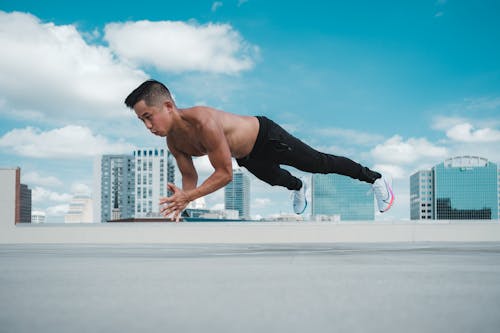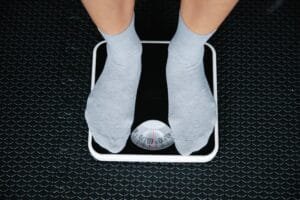Last Updated on October 3, 2025 by shawnshealth
Discover 5 common myths about minimalist strength training and how this effective method helps you build strength and get super fit!
Minimalist Strength Training: 5 Myths Debunked
Minimalist strength training is gaining popularity for its simple, yet effective approach to building strength. It’s perfect for busy individuals, beginners, and those who want to focus on quality over quantity. However, there are a number of myths surrounding this type of training that may deter people from giving it a try. Let’s set the record straight and debunk 5 common myths about minimalist training.
🌾 Want to turn minimalist training into real-world power? Unlock Farmer Strength shows you how to build grit, mobility, and functional strength—no fancy gear required. 📚 Need help mastering bodyweight movements? Visit The Ultimate Calisthenics FAQ
for progressions, technique tips, and training principles. 🧓 Looking for age-specific routines? Our Senior Fitness Pillar Post offers safe, progression-aware workouts to help older adults stay strong and mobile.
What is minimalist strength training?
- A streamlined workout approach focusing on essential, compound movements
- Ideal for busy schedules, beginners, and maximizing results with minimal time
- Emphasizes quality, consistency, and recovery over volume
Does minimalist training build real strength?
- Yes, it focuses on compound movements like squats and pushups
- Encourages progressive overload with fewer, focused exercises
- Proven effective for strength gains with less time commitment
Why consider minimalist strength training?
- Saves time while delivering strong results
- Reduces risk of burnout and overtraining
- Easier to stay consistent and build long-term habits
🏋️♂️ Ready to move from myth-busting to action? Discover 7 proven techniques that make minimalist strength training effective, efficient, and sustainable. 👉 Read
Minimalist Strength Training: 7 Proven Techniques for Great Results
🛒 Quick Tip: Looking for fitness gear? Browse top-rated equipment on Amazon to power up your workouts fast 💪
Table of Contents
Always consult your doctor before starting any new exercise program. The author is not responsible for injuries or health issues arising from the use of this information.
As an Amazon Associate, I earn from qualifying purchases. This means I may receive a commission if you purchase through links on this site, at no extra cost to you.
🔥 Need a quick mindset reset? Start Every Day Like This (Morning Motivation) from Strengthside is a short, powerful reminder to move with purpose and reconnect with your body.
Minimalist Training: My Story
I’m the minimalist training guy! Or that should at least be my middle name. Years ago, I found that the continuous struggle to find equipment, find a decent gym, or locate a hotel gym that had any strength equipment (usually just treadmills) was a task that I was getting really tired of. I was taking a chance each time wondering if there would be lines to the bench station, would they have any free weights or just machines, would the daily rate be expensive, etc. Would it even be clean?
This is one of the major factors that pushed me towards minimalist training. Firstly, I already knew that by just using bodyweight (pushups, pullups, squats) and/or a few simple pieces of equipment, that I could continue getting stronger without the need for a massive gym full of equipment. Secondly, it just made sense to be able to do an effective workout without having to go through the hassle of finding a gym. Seriously, I can get a wicked-good workout in my hotel room, or in a park, or wherever I can fit my body with almost no equipment!
Given my experience with minimalist training, I wanted to address in this article some myths that people sometimes have about minimalist training. You can do so much with just a little!
Happy training!
The Myths🔥
Myth 1: Minimalist Strength Training Is Only for Beginners
One of the biggest misconceptions about minimalist training is that it’s only suitable for beginners. The truth is, this approach is effective for people of all fitness levels, from beginners to advanced athletes. By focusing on fundamental movements like bodyweight exercises (push-ups, pull-ups, lunges), you can build strength and improve mobility at any stage of your fitness journey.
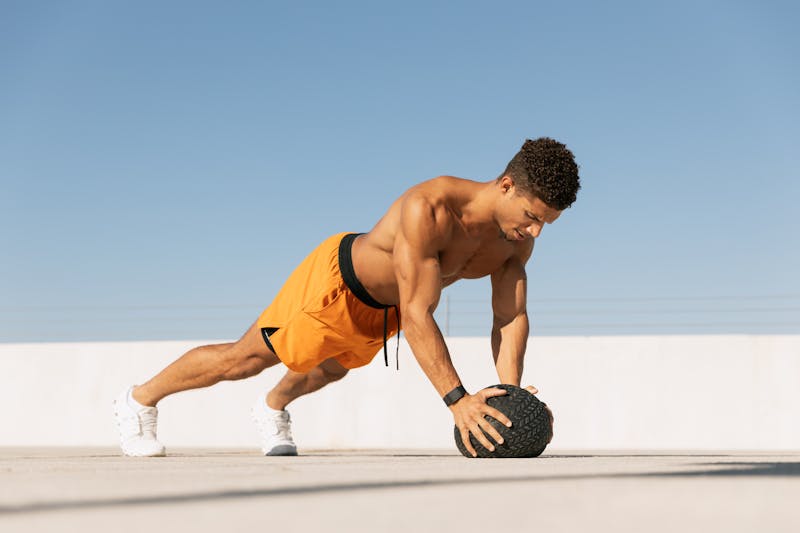
💪 Build real-world strength with our beginner-friendly minimalist routine—designed to improve mobility, stability, and power using simple, functional movements.
Myth 2: You Need Lots of Equipment for Minimalist Strength Training
Another myth is that minimalist training requires extensive gym equipment. In reality, minimalist training can be done with little to no equipment (it’s literally in the name). Bodyweight exercises are the core of this approach, and all you need is space to perform them. Even with basic tools like a resistance band or dumbbells, you can create a highly effective training routine.
Your body doesn’t really care if you are using your own bodyweight (pushups) or a barbell. Your body only cares about the force required to move the weight against gravity.
📖 Learn more from Harvard Health in The Benefit of Bodyweight Training—a concise overview of how simple movements can build strength, improve mobility, and support long-term health.
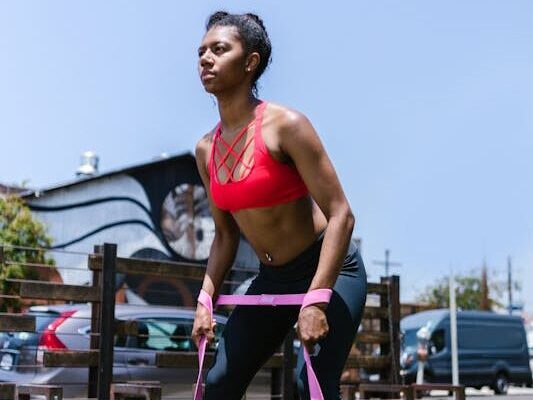
Myth 3: Minimalist Strength Training Isn’t Effective for Building Strength
A common misconception is that minimalist training isn’t effective for building significant strength. On the contrary, focusing on a few, highly effective exercises allows you to master each movement, leading to better strength gains. With the right progression and intensity, minimalist training can produce results similar to more complex routines.
- Progressive overload: increase intensity over time by adding reps, sets, or variations.
- Core exercises target multiple muscle groups, leading to efficient strength gains.

Myth 4: Minimalist Strength Training Doesn’t Build Muscle
Some people believe that choosing a minimalist approach to strength training won’t build muscle. However, by emphasizing proper form and progression, you can build lean muscle just as effectively as with traditional weightlifting. The key is to challenge yourself and continuously increase the intensity of your workouts. With exercises like pull-ups, squats, and push-ups, you can target all the major muscle groups and build muscle efficiently.
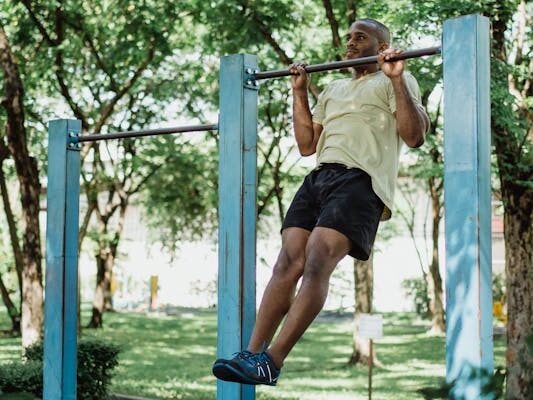
Myth 5: Minimalist Strength Training Is Too Boring
Finally, many people think that minimalist training is monotonous or boring. But by varying your routine, incorporating new exercises, and focusing on improving your form, you can make your training as challenging and exciting as you want. This approach also prevents burnout, as you’re not overwhelmed by endless sets of exercises. You can enjoy the simplicity of training with purpose and effectiveness.
- Variety: switch up exercises, add progression, and track improvements.
- Focus: allows you to focus on perfecting movements instead of doing more for the sake of it.
Boring? How is the ability to exercise literally anywhere, in any location, moving your own bodyweight through space boring? Compare to doing an overhead press at the same gym, staring at the same wall, using the same weights, and all while hearing the same chattering people over in the corner (whose life story’s you have since learned very well over the past weeks).
How to Get Started with Minimalist Strength Training
If you’re interested in getting started with minimalist training, here’s a simple approach to begin:
- Choose 3–5 core exercises (e.g., push-ups, squats, lunges, pull-ups, planks).
- Focus on form: Make sure you are performing the exercises correctly.
- Start slow: Begin with manageable sets and reps, and progressively increase intensity.
- Consistency is key: Aim to train at least 3–4 times a week.
- Track progress: Monitor improvements in strength and form to stay motivated.
🏋️♂️ Want simple strategies that actually work? Read Minimalist Strength Training: 7 Proven Techniques for Great Results to discover effective, low-equipment methods for building real-world strength.
Conclusion: Embrace Minimalist Training
By understanding the truth behind these 5 myths, you can see that the minimalist approach to strength training is a powerful, flexible, and efficient way to build strength and stay fit. Whether you’re looking for a simple workout routine or trying to avoid burnout, this approach has a lot to offer. Give it a try and experience the benefits for yourself!

Additional Information
🏋️♂️ For expert-backed training tips, explore our Calisthenics Strength Training Guide —a full breakdown of bodyweight movements for functional strength. Then dive into Jeff Nippard’s minimalist training insights to see how less can truly deliver more.
🔥 Gear to Help You Achieve Your Health and Fitness Goals 💪
If you’re looking for tools to enhance your fitness journey, check out this. Explore top-rated minimalist fitness gear on Amazon to enhance your workouts. Check out the latest picks here! 🛒 to support your workouts and progress.
🚀 Find equipment designed to boost strength, endurance, and overall performance!
⚠️ Short disclaimer: As an Amazon Associate, I earn from qualifying purchases.
🧱 Minimalist Strength Series: Build Smarter, Train Simpler
🔥 Explore our most effective resources for minimalist strength training—each one designed to help you train with intention, not excess.
🔹 Minimalist Strength Training: 7 Proven Techniques for Great Results: Master compound movements, bodyweight progressions, and time-saving strategies that deliver real strength without the fluff.
🔹 Minimalist Strength Training: 5 Myths Debunked: Don’t let outdated advice hold you back. Learn what minimalist training really is—and why it works.
🔹 Full-Body Bodyweight Workout: A complete, equipment-free routine that fits seamlessly into your minimalist strength plan.
🔹 Farmer Strength: The Rugged Blueprint for Real-World Power: Build grit, mobility, and functional strength with simple tools and old-school logic.
🔹 Functional Strength: Movement That Matters: Learn how to train for balance, coordination, and everyday capability—perfect for minimalist routines.
FAQ: Minimalist Strength Training
1. What is minimalist strength training?
Minimalist training focuses on essential, high-impact exercises with minimal equipment. It emphasizes quality over quantity for effective strength gains.
2. Can a minimalist strength routine help build muscle?
Yes, it can. By focusing on key exercises and progressively increasing intensity, you can build lean muscle, just like traditional weightlifting.
3. Do I need a gym for minimalist strength training?
No, minimalist strength training can be done anywhere with bodyweight exercises or minimal equipment like resistance bands or dumbbells.
4. Is minimalist training suitable for beginners?
Yes, it’s perfect for beginners. Simple exercises like push-ups, squats, and planks help build a strong foundation.
5. How often should I do a minimalist strength routine?
Aim for 3–4 times a week, focusing on consistency and gradual progression.
6. Is minimalist strength training effective for advanced athletes?
Absolutely! Advanced athletes can progress by increasing intensity, reps, or incorporating more challenging variations.
Yea, though I walk through the valley of the shadow of death, I will fear no evil: for thou art with me: thy rod and thy staff they comfort me. – Psalms 23:4

